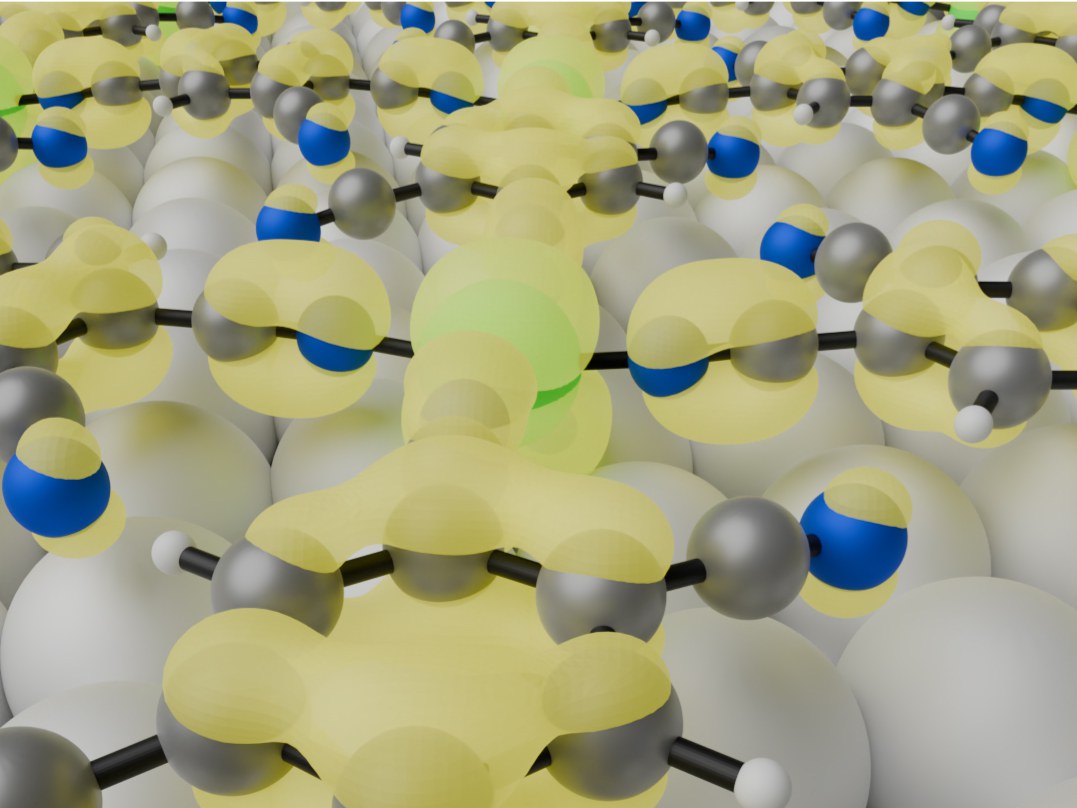20 August 2024
A team of physicists from Forschungszentrum Jülich and the University of Graz has achieved a breakthrough in the development and characterisation of 2D-MOFs, a special type of two-dimensional material. They were able to show how the structure of the materials is formed and which electronic and magnetic properties are associated with it. This opens up promising possibilities for the design of future materials. The scientists published their results in two studies in the renowned journals ACS Nano and Advanced Science.

Aiming at ever thinner materials, one eventually reaches the two-dimensional (2D) limit, where the material ultimately becomes just a few atoms, or even only one atom, thin. In this "flatland", the materials acquire unique mechanical, electronic and optical properties that promise great potential for future innovative technologies, for example as materials for energy conversion and storage. Famous examples of such 2D materials are semi-metallic graphene or semiconducting molybdenum disulphide (MoS2).
In two recent publications, physicists from the Forschungszentrum Jülich and the University of Graz now report a significant breakthrough in engineering and characterizing the electronic structure of so-called 2D metal-organic frameworks (2D-MOFs). Such 2D-MOFs are a special type of 2D materials, that are made up of metal atoms connected by organic (carbon-based) molecules. They combine the best of both worlds, metals and organic materials, and they hold promise for a wide range of advanced technologies, making our devices smaller, smarter, and more efficient.

Using a synergistic approach that combines experimental and theoretical methodologies, the researchers provide direct evidence for the emergence of band structure upon the hierarchical assembly of organic linkers and transition metal centers into a 2D-MOF lattice.
However, the two studies show not only the formation of the band structure, but also the associated multifunctional electronic and magnetic properties of 2D MOFs: these are largely independent of the underlying substrate. The findings offer a new perspective on how to tailor electronic band structures in 2D MOFs and pave the way for the integration of these materials into future electronic and photonic devices.
The momentum-resolved photoemission experiments were conducted at the Elettra synchrotron facility in Trieste, Italy, where the Jülich group operates their own NanoESCA beamline, with contributions from Simone Mearini, Dr. Daniel Baranowski, Dr. Vitaliy Feyer, and Prof. Claus M. Schneider. All theoretical investigations for this project were performed by Dominik Brandstetter, Dr. Andreas Windischbacher and Prof. Peter Puschnig from the University of Graz, Austria.
Additional experiments were carried out in close collaboration with Prof. Laerte L. Patera and Marco Thaler from the University of Innsbruck, Dr. Luca Floreano and Dr. Luca Schio from the Italian National Research Council, and Dr. Pierluigi Gargiani and Dr. Manuel Valvidares from the BOREAS beamline at the ALBA synchrotron. The research was conducted in close collaboration with Dr. Iulia Cojocariu from the University of Trieste.
Original publications:
Emergence of Band Structure in a Two-Dimensional Metal-Organic Framework upon Hierarchical Self-Assembly,
D. Baranowski, M. Thaler, D. Brandstetter, A. Windischbacher, I. Cojocariu, S. Mearini, V. Chesnyak, L. Schio, L. Floreano, C. Gutiérrez Bolaños, P. Puschnig, L.L. Patera, V. Feyer, C.M. Schneider, ACS Nano, 18 (30), 19618-19627 (2024).
Band Structure Engineering in 2D Metal-Organic Frameworks,
S. Mearini, D. Baranowski, D. Brandstetter, A. Windischbacher, I. Cojocariu, P. Gargiani, M. Valvidares, L. Schio, L. Floreano, P. Puschnig, V. Feyer und C.M. Schneider, Adv. Sci. (2024) 2404667.






